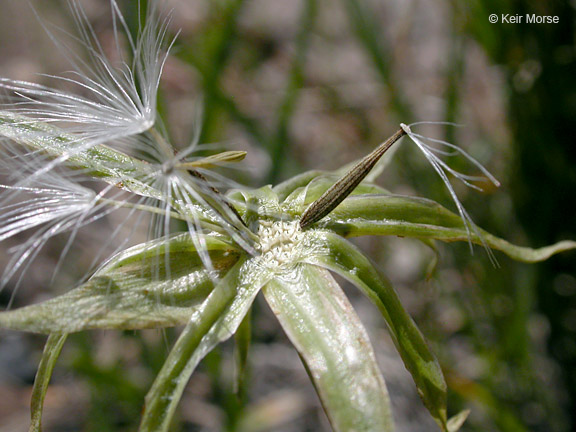Perennials, 3-45 cm. taprooted, with caudices often multicipital (taproots thick, fleshy, with blackish periderm, lateral rootlets often borne in clusters on knoblike projections). Stems 1-5+, erect, scapiform, naked (rarely with 1-3 bracteate nodes near base in N. troximoides and N. nigrescens). glabrous or white-villous, especially near heads. Leaves basal; petiolate (bases attenuate or not); blades linear to oblanceolate, margins usually entire (often pinnately lobed in N. alpestris), sometimes undulate (usually white-ciliolate in N. cuspidata and N. troximoides; faces glabrous or lightly villous). Heads borne singly (erect, liguliferous). Peduncles not inflated distally, not bracteate. Calyculi 0. Involucres broadly to narrowly ovoid, campanulate at flowering, 5-20 mm diam. Phyllaries 8-50 in 2-5 series, (often longitudinally striped or finely dotted with red or purple) lanceolate to ovate, equal or unequal (outer shorter), herbaceous (thin), midnerves inconspicuous, apices acute to acuminate, faces glabrous or white-villous . Receptacles flat, pitted, glabrous, epaleate. Florets 13-100; corollas yellow, often reddish abaxially (much surpassing phyllaries in flowering, tubes hairy). Cypselae brown or gray. narrowly columnar to fusiform, usually narrowed distally, not beaked, ribs ca. 10, glabrous or distally scabrous; pappi fragile, of 10-80. distinct, lustrous, white, ± equal. smooth to barbellulate bristles or aristate scales. x = 9.
Because pappi of Nothocalaïs taxa vary from capillary bristles to aristate scales, the species were earlier assigned to either Agoseris or Microseris. The totality of morphologic evidence supports the unity of the genus, as well as its segregation from Agoseris and Microseris (K. L. Chambers 1955, 1957). According to recent phylogenetic studies based on chloroplast DNA (R. K. Jansen et al. 1991b; J. Whitton et al. 1995), Nothocalaïs is most closely related to Uropappus and Agoseris, the three genera together comprising a clade sister to Microseris.





